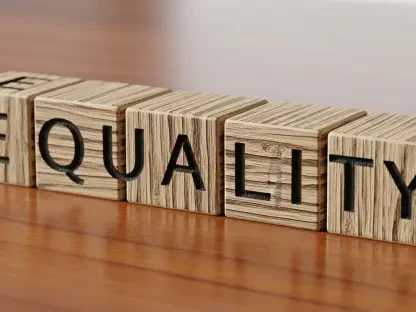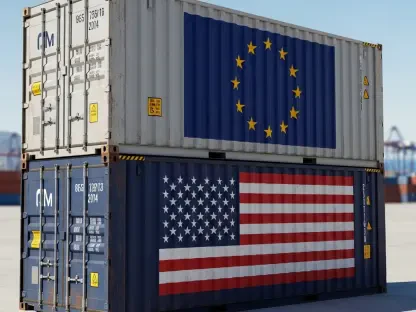Desiree Sainthrope is a legal expert with a profound understanding of trade agreements and global compliance. Furthermore, her insights into intellectual property and the implications of emerging technologies such as AI have positioned her as a sought-after authority in the legal field. In today’s interview, we delve into the intricacies of supply chain management, with a focus on corporate sustainability and compliance directives, particularly the EU’s Corporate Sustainability Due Diligence Directive (CSDDD).
Can you explain how the supply chain issue at the European manufacturer was initially discovered?
It started as a routine investigation into a missing shipment of essential components that halted production at the company. The procurement team began tracing the disruption back through the supply chain, and this is when they unearthed forced labor practices at a sub-tier supplier. This discovery highlighted significant issues deeply embedded within the network that were previously unknown to the company.
What were the initial assumptions about the delay in the supply chain?
Initially, the delay was perceived as a minor logistical issue, the type that can often be quickly resolved by seeking alternate suppliers or expediting shipments. There was no indication that the problem ran deeper until a thorough investigation was conducted.
How did the discovery of forced labor practices at a sub-tier supplier impact the company?
It sent shockwaves through the organization. Beyond the immediate operational disruption, the company faced immense reputational risks. Investors would demand transparency, regulators might impose sanctions, and customers increasingly valuing ethical practices would expect accountability. This forced the company to reconsider its entire approach to supply chain management.
What were the immediate operational disruptions caused by this discovery?
The company had to halt production temporarily due to the missing components. This led to operational challenges as they navigated through finding alternative suppliers and mitigating the immediate fallout of the discovery. These interruptions also required a rapid response to maintain stakeholder trust and ensure continuity.
How did the possibility of reputational damage influence the company’s response?
Reputational damage can be catastrophic, impacting market value, trust, and long-term relationships. Therefore, the company had to act swiftly to address the forced labor issue transparently. This included engaging with stakeholders, reassessing supplier partnerships, and making necessary adjustments to their practices to align with ethical standards.
How did the company approach the decision to either treat the incident as a one-off compliance issue or as an opportunity to reimagine its supply chain?
This incident served as a wake-up call. The company decided to use the crisis as an opportunity to reimagine its supply chain, moving beyond simply addressing compliance issues to implementing more robust, ethical, and sustainable practices. They recognized that transforming their supply chain could offer long-term benefits and prevent future disruptions of this nature.
What is the main goal of the EU’s Corporate Sustainability Due Diligence Directive (CSDDD)?
The primary goal of CSDDD is to address human rights abuses, environmental damage, and governance failures comprehensively across global supply chains. It seeks to ensure that businesses are accountable and responsible for the practices not just within their direct supplier base, but potentially throughout their extended supply networks.
How does CSDDD address human rights abuses, environmental harm, and governance failures across supply chains?
CSDDD compels businesses to delve deeply into their supply chains, identifying and mitigating risks at all tiers. This includes ensuring that suppliers adhere to ethical practices, scrutinizing environmental impacts, and verifying governance standards. It’s designed to bring transparency to supply chain operations, thus promoting sustainability and ethical behavior.
What does the directive compel businesses to do in terms of their supply networks?
Businesses are required to adopt comprehensive due diligence processes that encompass their entire supply network, including sub-tier suppliers. They must establish mechanisms to detect and address issues such as forced labor, environmental degradation, and governance failures, ensuring full compliance with established ethical standards.
Why are the risks in sub-tier supply chains often hidden from view?
Sub-tier suppliers often operate in regions with fewer regulatory controls and less oversight, making unethical practices more prevalent and harder to detect. Furthermore, the complexity and opacity of global supply networks mean that risks can be buried deep within multiple layers of suppliers, out of sight of the primary business.
How does CSDDD force companies to confront hidden layers in their supply chains?
By mandating accountability across all tiers, CSDDD requires companies to explore their supply chains thoroughly. It forces them to evaluate and address risks several layers down, not just with direct suppliers. This comprehensive approach ensures that issues buried in more obscure sub-tiers are brought to light and mitigated.
Can you provide an example of a common issue found in sub-tier supplies, like forced labor?
A prevalent issue is forced labor, where workers are subjected to unfair conditions such as meager wages, unsafe working environments, passport confiscation, and restrictions on their freedom. These practices are often embedded in regions with low regulatory control, making them hard to detect without thorough due diligence.
What are the potential benefits of having visibility into sub-tier suppliers?
Visibility into sub-tier suppliers offers numerous benefits, including early risk detection, enhanced compliance, operational resilience, and the ability to uphold ethical standards. It allows companies to identify vulnerable suppliers and intervene proactively, maintaining reputation and trust while mitigating risks.
How can companies use sub-tier visibility to identify and address risks before they escalate?
By continuously monitoring sub-tier suppliers, companies can spot potential issues before they become significant problems. This proactive approach involves engaging with suppliers, addressing root causes, and, where necessary, severing ties with non-compliant partners. Such measures help in preventing reputational and operational damages.
How does having visibility into sub-tier suppliers enhance operational resilience?
Operational resilience is improved through an understanding of dependencies across all supply chain tiers. Knowing where vulnerabilities lie allows companies to develop contingency plans, diversify sourcing, and build flexibility. This preparedness ensures business continuity amid various disruptions, such as geopolitical instability or supply chain interruptions.
What advantages do companies gain in terms of brand reputation and investor interest by demonstrating a commitment to ethical practices?
A strong commitment to ethical practices enhances brand reputation and increases attractiveness to socially responsible investors. Companies can showcase their environmental, social, and governance (ESG) credentials, building trust with consumers and stakeholders, and tapping into new growth opportunities driven by ethical considerations.
How does the EU’s CSDDD represent a turning point for global supply chain management?
CSDDD marks a significant shift by enforcing comprehensive due diligence across supply chains. This directive moves companies from a reactive compliance mindset to a proactive, ethical approach. It fosters innovation and resilience, encouraging businesses to integrate sustainability deeply into their operations.
Why should forward-thinking organizations view this directive as more than just a regulatory checklist?
Seeing the directive solely as a regulatory checklist limits its potential. Forward-thinking organizations should embrace it as a framework for driving strategic, ethical, and sustainable practices. It provides a pathway for innovation and differentiation, allowing companies to lead in market resilience and ethical operations.
What proactive steps can companies take to achieve sub-tier visibility?
Businesses can adopt advanced monitoring tools, establish transparent reporting systems, and work closely with suppliers to ensure compliance. Investing in technology that maps supply chains and highlights risks is essential, as is fostering a culture of active engagement and ethical stewardship throughout the network.
What role do technology tools play in achieving the transparency required by CSDDD?
Technology is pivotal for achieving transparency, providing tools for detailed supply chain mapping, risk assessment, and monitoring compliance. Advanced analytics, blockchain, and AI can help trace origins and movements, highlighting vulnerabilities and ensuring adherence to ethical standards.
How can businesses unlock new sources of value through ethical and transparent supply chain management?
Businesses can enhance their reputation, attract investment, and foster consumer loyalty by prioritizing ethical and transparent practices. Innovative supply chain management can reveal operational efficiencies, drive sustainability, and unlock competitive advantages, creating long-term value and growth.
What is your forecast for global supply chain management in light of such directives and technological advancements?
I foresee a shift toward greater transparency and ethical practices becoming standard. Technology will play a critical role in enabling this transformation, driving efficiency and sustainability. Companies that proactively embrace these changes will lead in resilience, innovation, and market differentiation.









